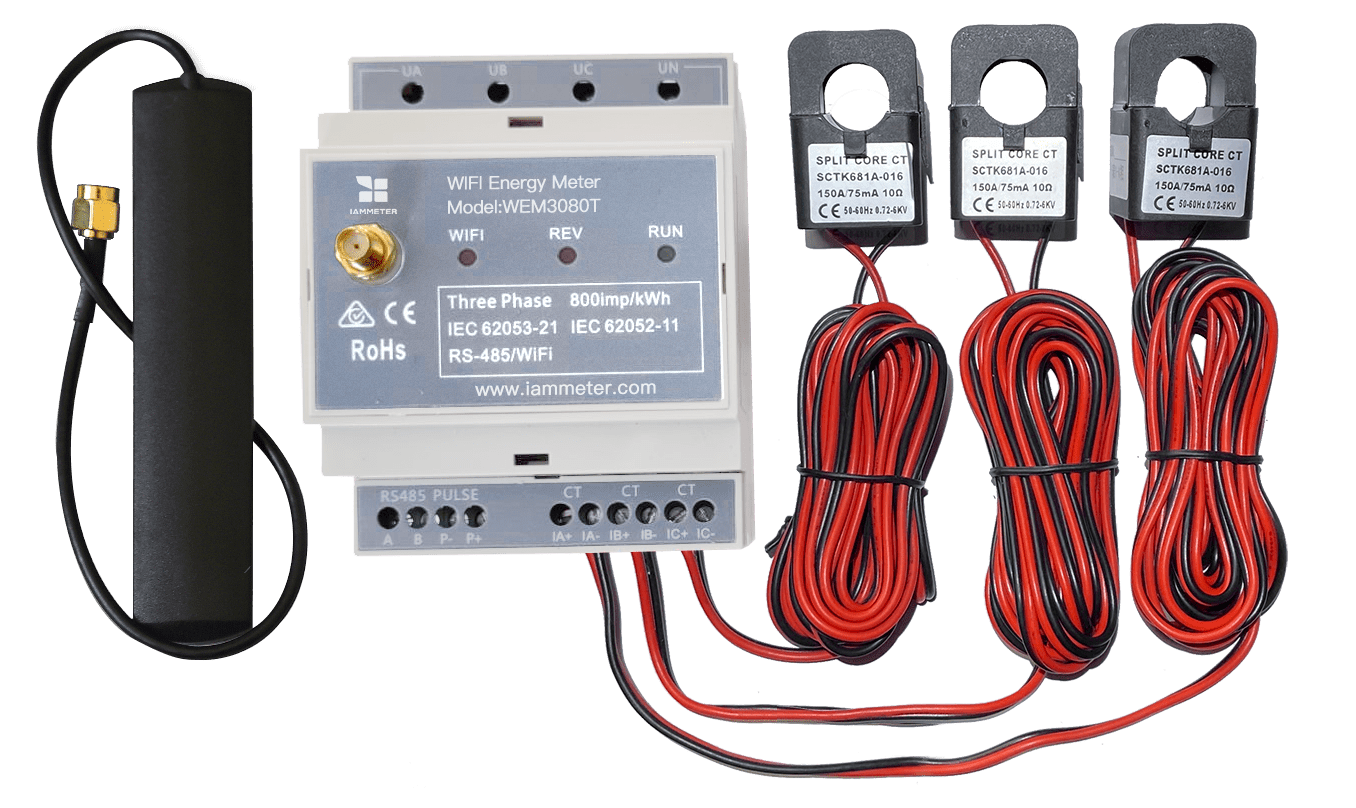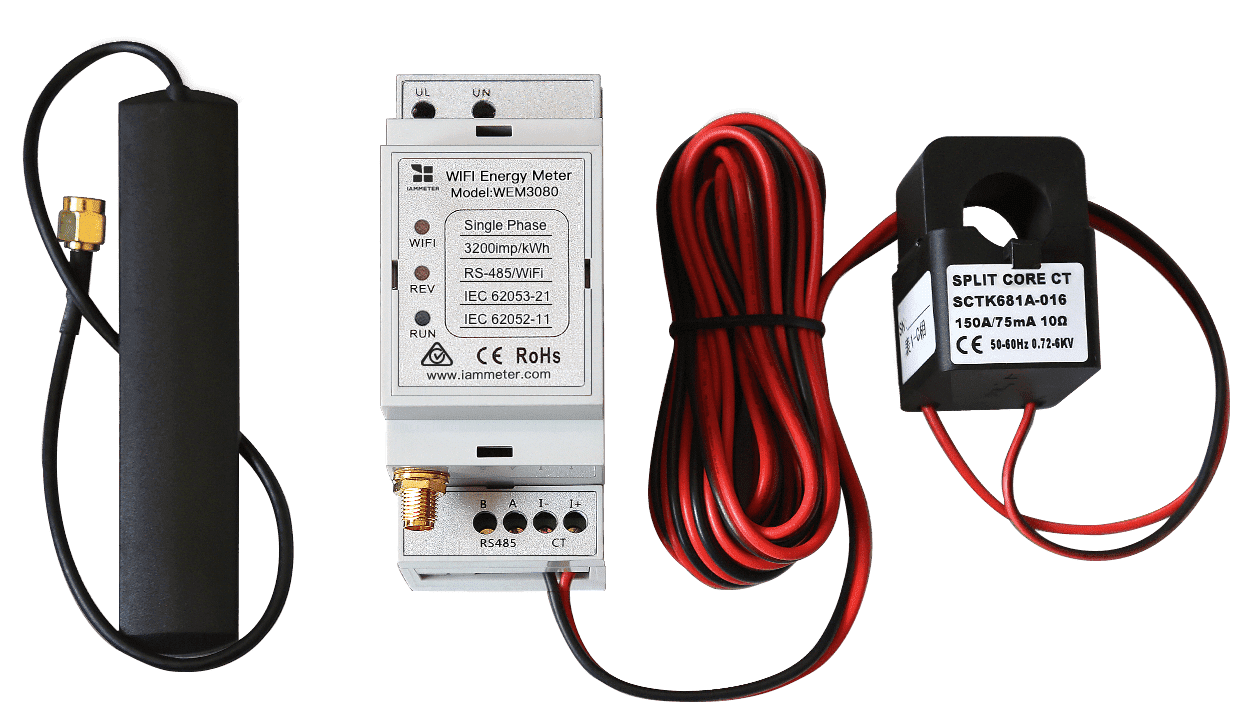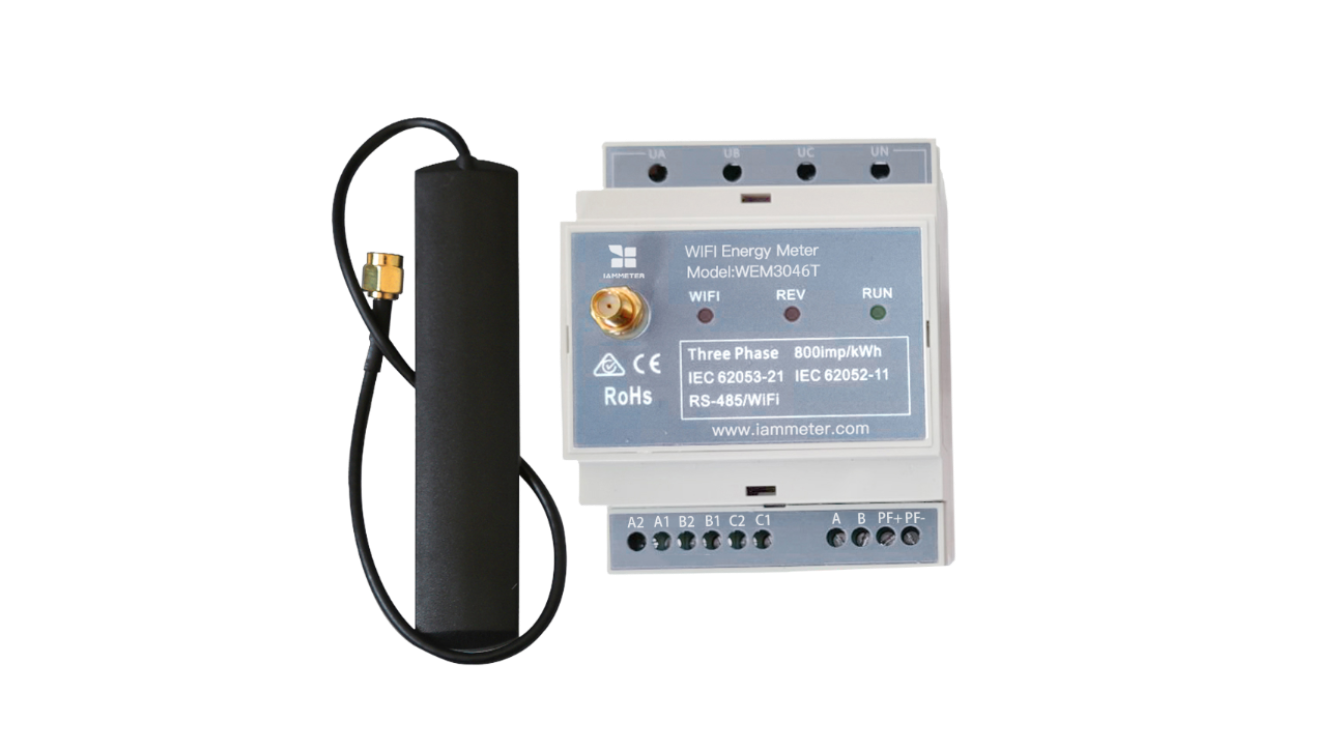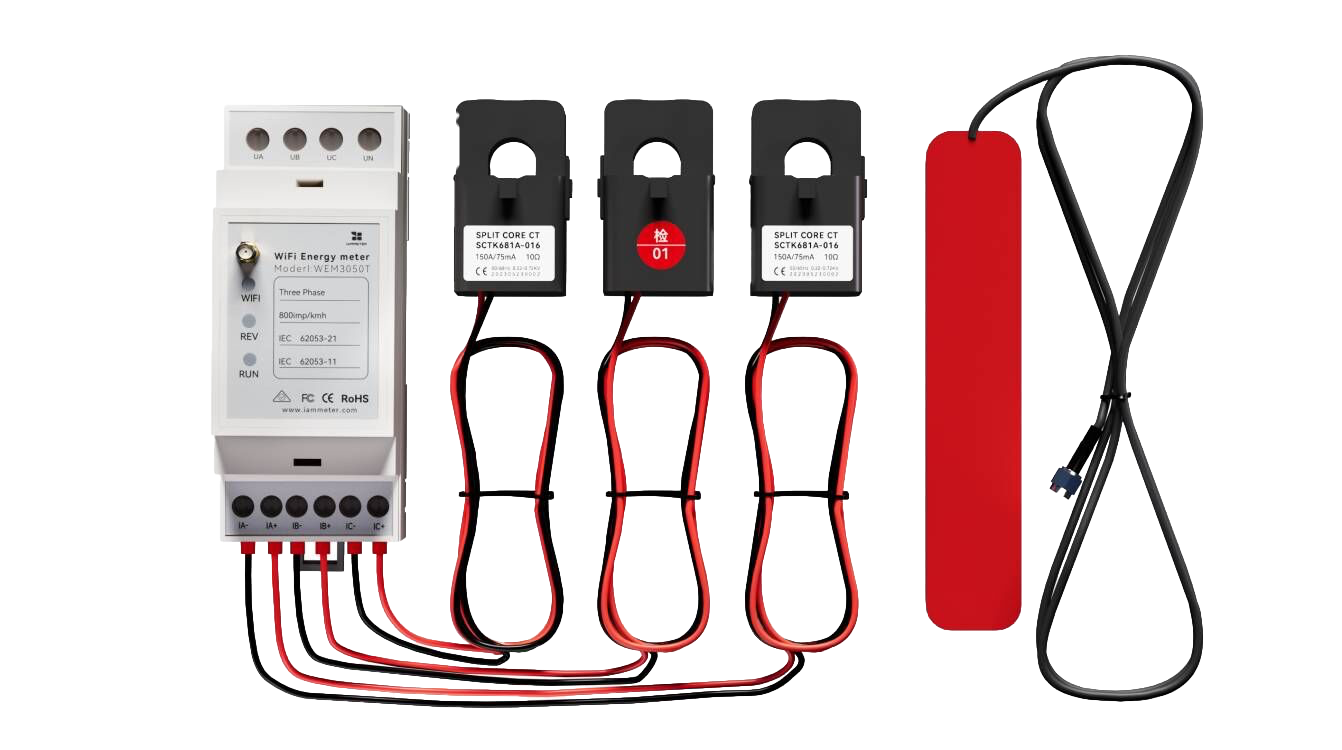Measure the single phase three wire system(120V/240V) in a cost effective way
Efficient Measurement of Single Phase Three-Wire Systems (120V/240V) Using a Single-Phase Energy Meter
Note: This method is applicable for balanced single-phase 3-wire systems, such as those utilizing dual-phase inverters commonly found in most North American countries.
For a better approach to monitor both 120/240V and 120/208V systems, refer to Monitor the system of 120/240V or 120/208V in North America.
Understanding the Single Phase 3-Wire System
Single-phase 3-wire systems, also known as two-phase or Edison systems, consist of 2 hot wires and a neutral wire. This configuration is prevalent in most residential setups across the Americas. Measurement from hot wire to hot wire yields 240 volts, while measuring from either hot wire to neutral yields 120 volts.
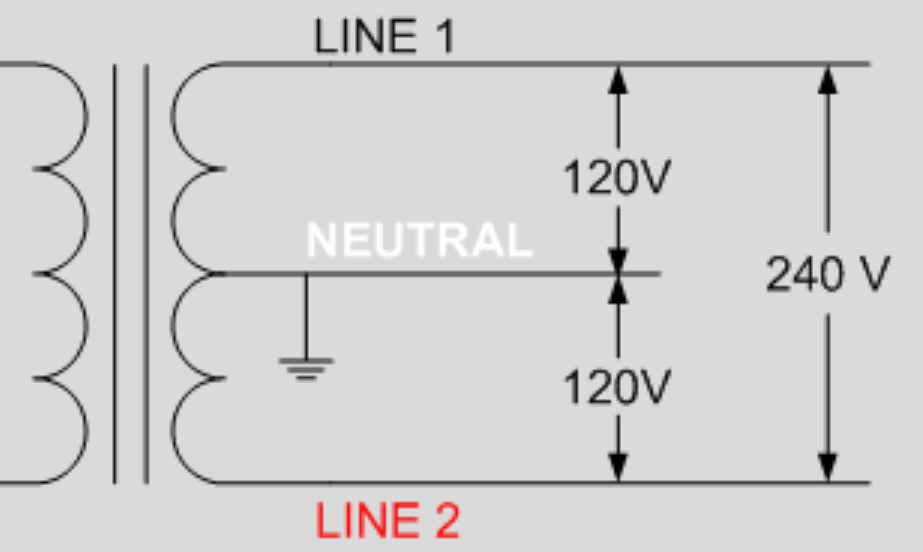
Traditional Approach: Using a Three-Phase Energy Meter
Ordinarily, this system can be measured using the WEM3080T - a 3-phase energy meter supporting split-phase measurement. Utilizing the WEM3080T's split-phase feature allows independent measurement of each phase, encompassing voltage, current, bi-directional active power, kWh grid consumption, and potential energy export to the grid.
Cost-effective Alternative: Employing a Single-Phase Energy Meter
For those seeking aggregated consumption or output monitoring (specifically for the single-phase three-wire inverter), a more cost-effective approach exists. This method involves utilizing just one WEM3080 (Single phase wifi energy meter) to monitor the system.
Installation Instructions
The installation entails:
- Connecting the UL and UN terminals of the energy meter to the two live wires.
- Clamping the Current Transformer (CT) onto one of the two live wires.
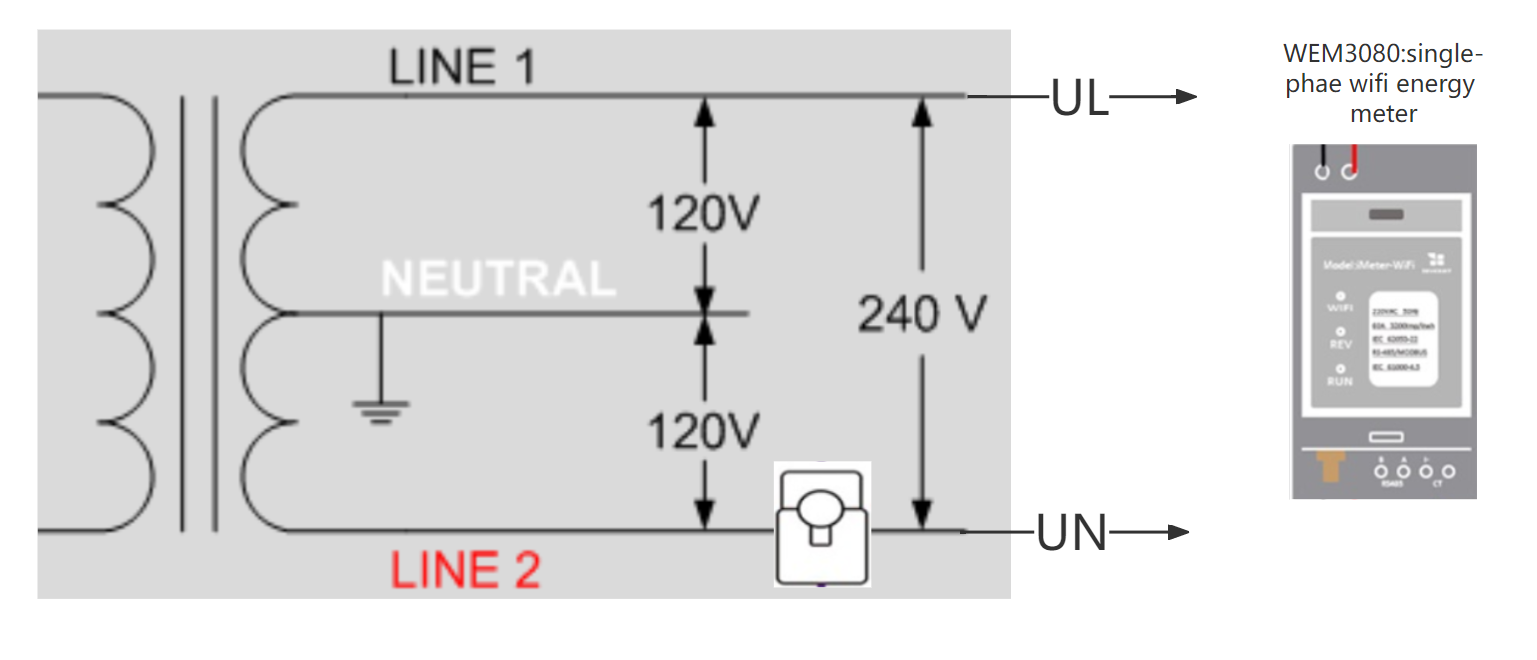
Advantages
- Cost savings: Single-phase energy meters are more economical than three-phase meters.
Disadvantages
- Voltage measurement reflects approximately 240V (voltage between the two live lines).
- Provides aggregated power and energy data for both phases; does not offer specific readings for individual phases.
References
- Monitor the system of 120/240V or 120/208V in North America
- Phases and wires in distribution of AC power
- Wiring diagram: Installing the IAMMETER energy meter in your system
- Monitoring your solar PV system with Home Assistant
- Integrating IAMMETER energy meter with third-party platforms
- Monitoring your solar PV system in IAMMETER cloud
- Monitoring your electricity usage in IAMMETER-cloud




